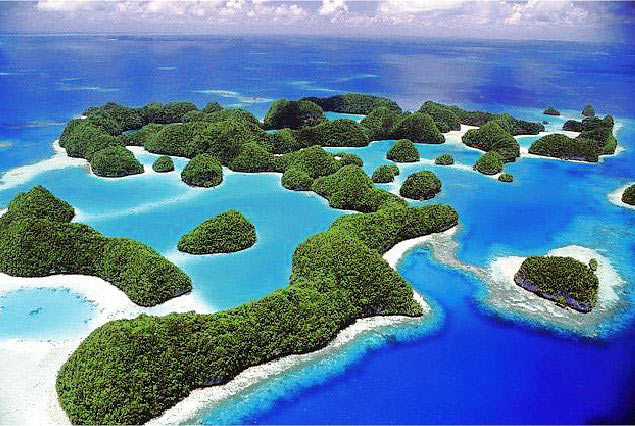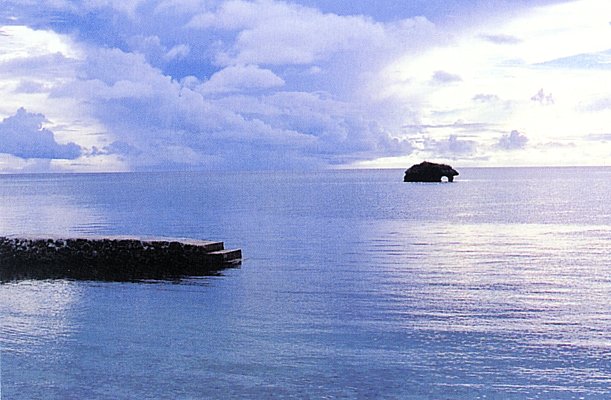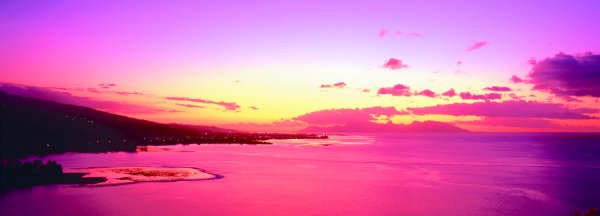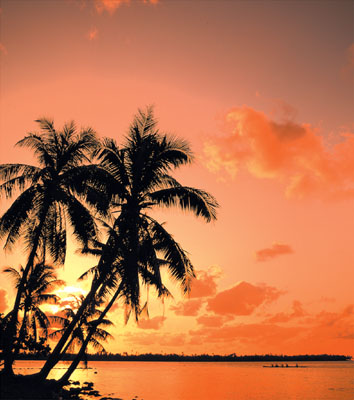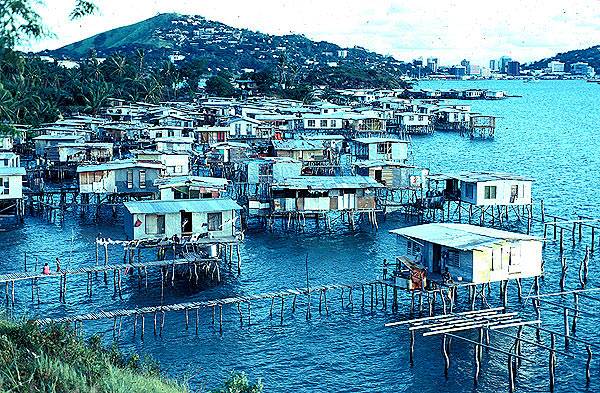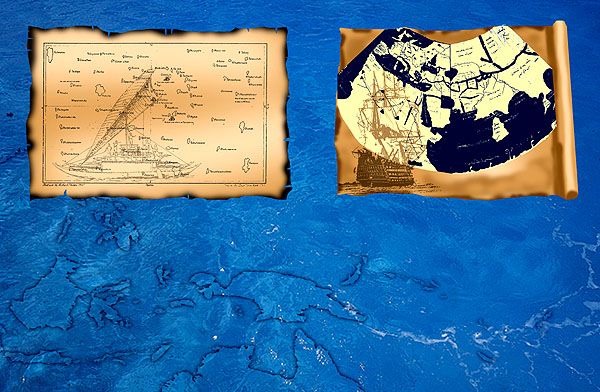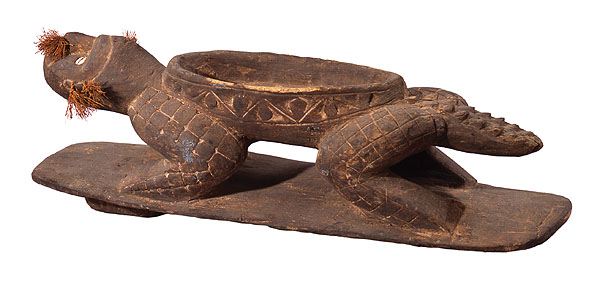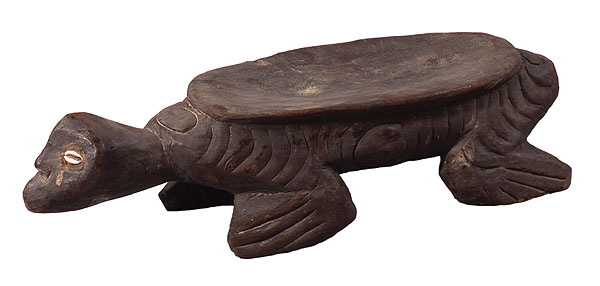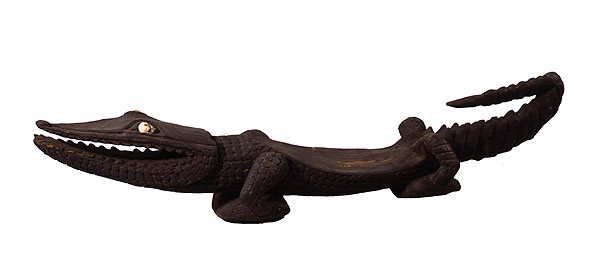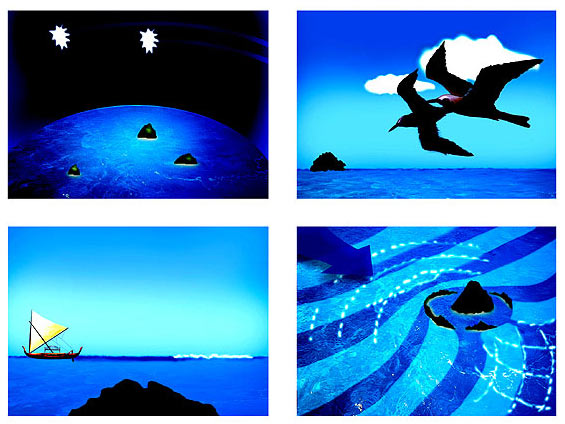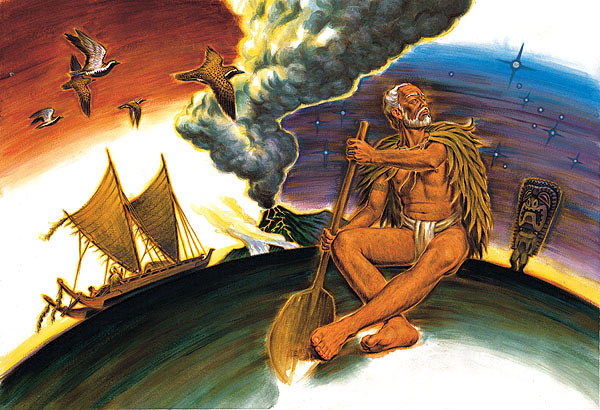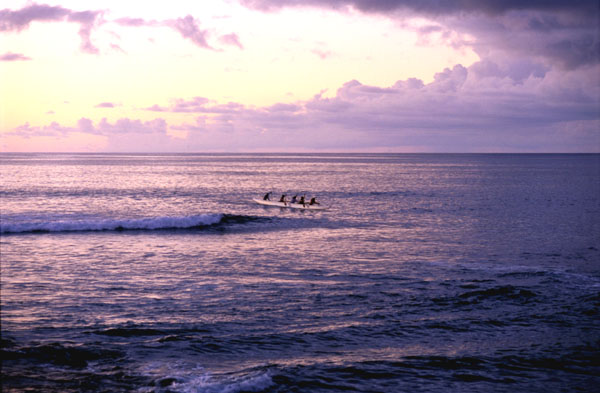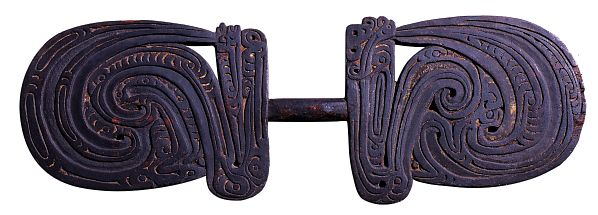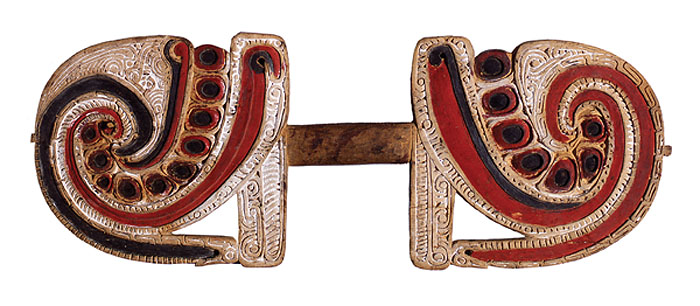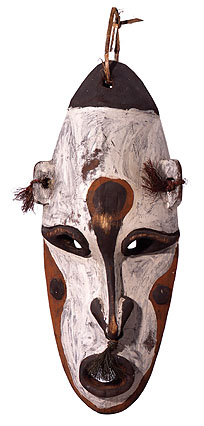The Ocean-1
People living on a large land mass may think of Melanesia and Polynesia as "small islands in the vast ocean" and that the land is narrow, small, remote and isolated.
However, to islanders, life is centered on the concept of "an ocean with scattered islands". It is not just about island size, but also about the vast ocean and the resources that lie within.
Islanders are at home on the water, and naturally learn much about the sea and marine navigation.
The ocean provides resources for living and is a crucial part of myths, religious beliefs and historical events.
The Austronesians have traveled far distances in a vast ocean. They have been to a third of the world. Their navigational accomplishments accompany their excellence in boat manufacturing techniques. Their knowledge of astronomy, wind direction, ocean currents and ocean water allow them to indicate direction without the need for a compass.
They choose suitable seasons to go on expeditions, obey traditional taboos and try to manipulate the weather using shamanism to help with their sailing.
Forty thousand years ago, the first immigrants to New Guinea relied completely on hunting of wild animals, fishing and gathering of plants to survive.
Farming and animal husbandry appeared at least 4,000 to 5,000 years ago.
Every island society categorized plants and animals as edible, decorative, religious and so on. They would also identify and classify animals and plants with no practical value and give them unique names.
The Pacific Ocean has two main spiraling currents. The current above the equator moves in a clockwise direction; the current below the equator moves in a counterclockwise direction.
The currents would indirectly bring to the islands marine creatures from other places, or would help or hinder marine traffic and therefore cultural and social interflow.
Islanders could tell direction according to the angle of the sun. Being familiar with the route of the sun's movement, they determined direction by the position of sunrise and sunset relevant to their boat.
While sailing, navigation was carried out utilizing the sun, currents and wind. It was very important that the wind hit the side of the boat's outrigger, so that the boat would tilt and support the outrigger. Therefore, sailors adjusted the position of their boats according to the direction of the wind.
Detecting the current's direction was not done with the eyes, but by the movement of the ship. Experienced sailors used the main currents to keep the ship on the correct route; some referred to the minor currents, and the currents that are affected by land. Furthermore, while sailing towards islands, certain sea birds could be used as indicators. For example, birds that live on land and feast on the sea will return to their nests eventually, such as seagulls, puffins and frigate birds.
When sailing during the day, more information is needed to determine direction, however, the results are less accurate. The starry sky at night, on the other hand, provides more clues, so the direction can be more accurately denoted. The South Cross is an example.
The knowledge of astronomy can be obtained while sailing, or by other means. For instance, the Satawal people used rocks, coconut palm leaves, and logs to form astrolabes for teaching the young.
Furthermore, some islanders understood the concept of constellations. For example, on Tasman Islands, people described constellations in terms of the shapes of marine creatures.
Some navigators did not tell direction by the stars or currents, but by supernatural powers such as a rainbow or shooting stars that would lead them to their destination. Others were led by animals such as sharks and dolphins, etc.
Shamanism related to sailing mostly involved a wish for a peaceful trip, a durable and speedy boat, and the completion of the journey's goals. Special shamanism practices could bring peace, call for wind or stop the rain.
